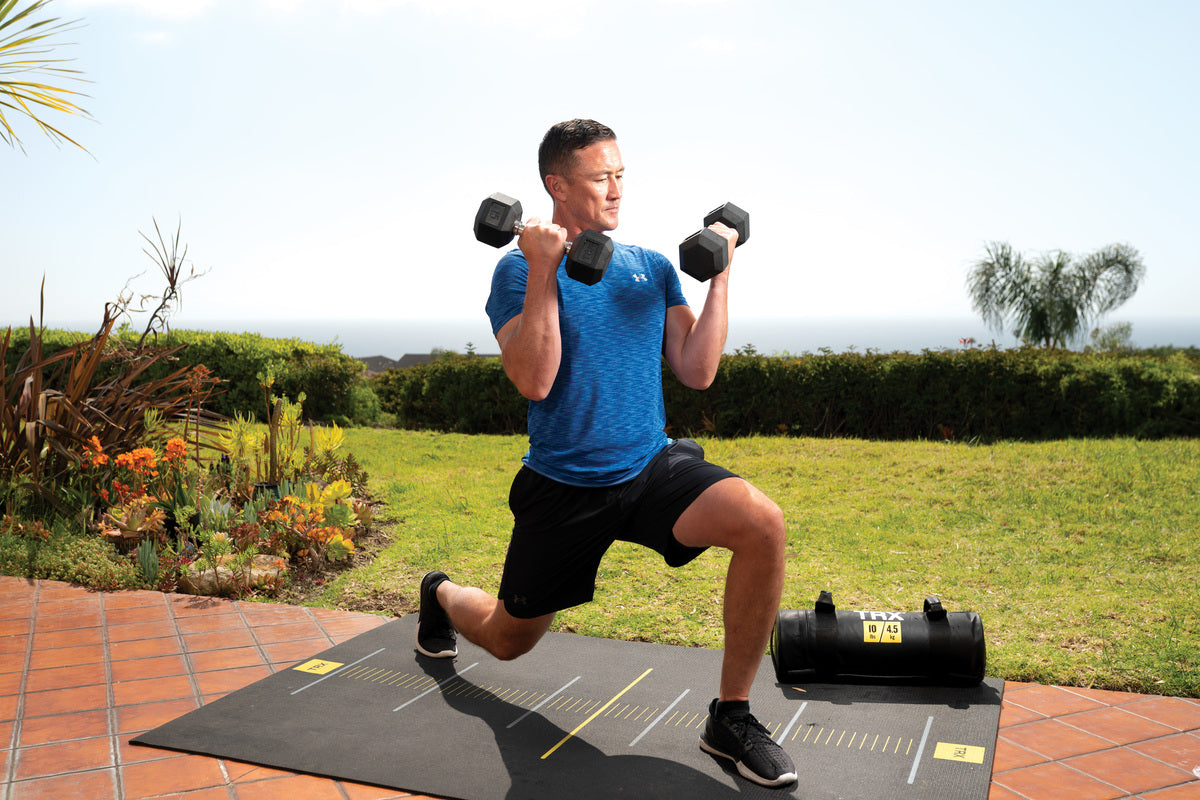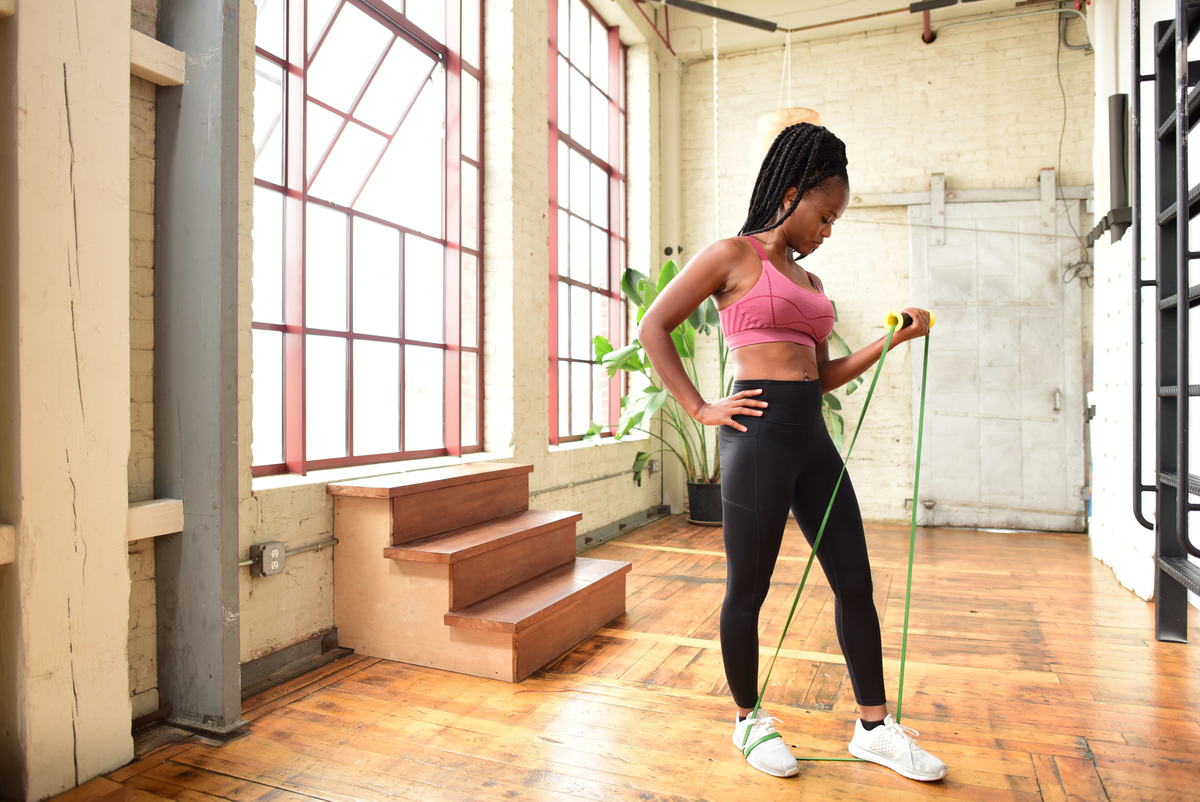The truth is, we often find reasons to avoid working out, even if it's as simple as moving to an adjacent room. Constructing a well-organized home gym can serve as an inspiration to exercise, leading to an improvement in your physical and mental health.
Considering the significant amount of time you ought to spend in your workout space, it's certainly a wise decision to invest in organizing a home gym that you'll enjoy using.
How to Organize Gym Equipment at Home
Step 1: Assess Your Home Gym’s Location
Some newer homes are designed with dedicated workout rooms, which makes this decision easy. But if you’re in a smaller space, you likely have to choose from the basement, garage, attic, a spare bedroom, the family room, home office, or even a backyard shed.
Don’t automatically select a space before critically evaluating your choices. It may turn out that the spare bedroom actually works much better for you than the basement. If you currently have a home gym that you’re not using, it may be time to re-evaluate its location.
Step 2: Take an Equipment Inventory
Take an inventory of everything that’s currently part of your home gym, from an elliptical to a mat to resistance bands, and gather it all together in one place. While you’re at it, consider getting rid of anything that’s broken or that you never use. Jot down a wish list of additional items you’d like to add at some point.
Will your current equipment fit in the space you’re planning to use? Will it also fit your wish list equipment?
Step 3: Consider These Important Extras
Putting down rubber flooring tiles provides shock absorption, traction, and comfort. Ventilation is key to helping you control your breathing during a workout, so you also may want to add a ceiling or floor fan. A TV or computer makes it simple to access entertainment or online classes, and a sound system may be a priority if you don’t rely on earbuds.
Hang a full-length mirror or two to ensure that you’re using proper form, and lend ambiance with a plant or inspirational wall hangings. Keeping some workout towels, tissues, and a charger handy also eliminates the hassle of trips back and forth before or during your routine.
Step 4: Plan the Layout
Once you’ve laid out all of the equipment and accessories you’ll need, it’s time to organize.
First, determine where you’ll put any large machines, like a treadmill, considering electrical access and ceiling height if necessary. Then, prioritize easy access and the room’s flow, and figure out where to keep other items, such as a weight bench, free weights, and a foam roller.
If possible, minimize obstacles to accessing your equipment, which may hinder motivation. For instance, storing your resistance bands on a hard-to-reach shelf in a closet may be a disincentive to use them at all. Or if you have to drag out your weight bench from a storage area every time you want to use it, you might just skip it. Try to keep your gear within close reach and in sight as a visual reminder.
Home Gym Storage Ideas
If you’re tight on space, you’ll need to be creative with your home gym equipment storage to make the most of your square footage. Fortunately, there are multiple ways to house everything in your workout area. Search your home for some of these options, check garage sales, find them online, or shop local stores.
Shelving Units
Keeping things off the floor maximizes your space and safety and reduces trip hazards. Start by measuring your workout area and counting everything that needs to be stored, such as dumbbells, a medicine ball, resistance bands, an ab roller, a mat, a stability ball, and more.
Choose from standard industrial wire shelving, multi-purpose racks, storage cubes, or locker-inspired units. If you have a lot of hand weights, invest in a dumbbell rack to keep them neat. Wall-mounted shelves can house lighter items, such as a yoga mat, weight training gloves, and gliding disks.
Creative Resources
An under-bed box can house accessories and be rolled out of sight in compact spaces. An ottoman with a lid doubles as a simple, hidden storage option. Sturdy wicker baskets trump basic utilitarianism with an attractive aesthetic. And a bungee cord or netting attached to the corner of a room can keep a stability ball out of the way.
Another creative resource is choosing compact fitness equipment like the YBell, which does the work of traditional workout equipment like dumbbells, kettlebells, double grip med balls, and push-up stands, but takes up far less space since it’s just one piece of equipment.
You can pair this with TRX Training's suspension trainer, which uses bodyweight and gravity to allow you to get a full-body workout. The combination of YBell and TRX Training allows for an endless combination of workout splits you can do in your home.
Hooks and Pegboards
Hanging accessories on the wall saves floor space, so look for hooks or specially designed home gym storage racks that can hold jump ropes, resistance bands, towels, and other accessories. Pegboards are another inexpensive way to get access to lots of adjustable hooks for a custom layout.
Keeping your home gym organized is essential to a stress-free workout experience. You don’t just want it to be convenient; it should also motivate you to work out and get you excited to improve your health.



